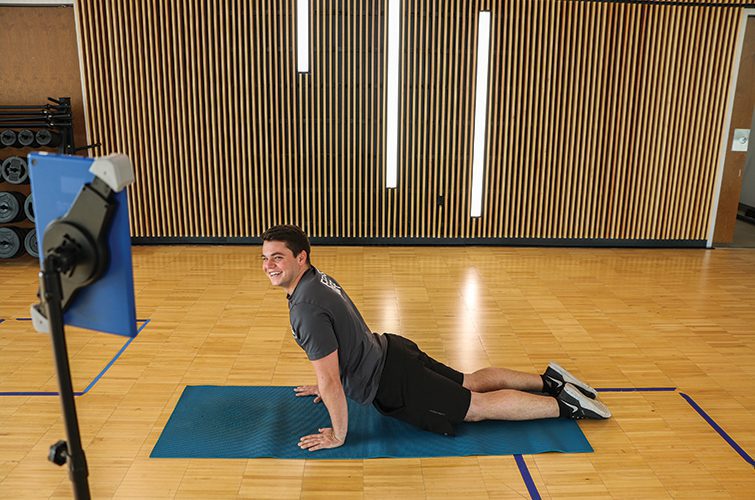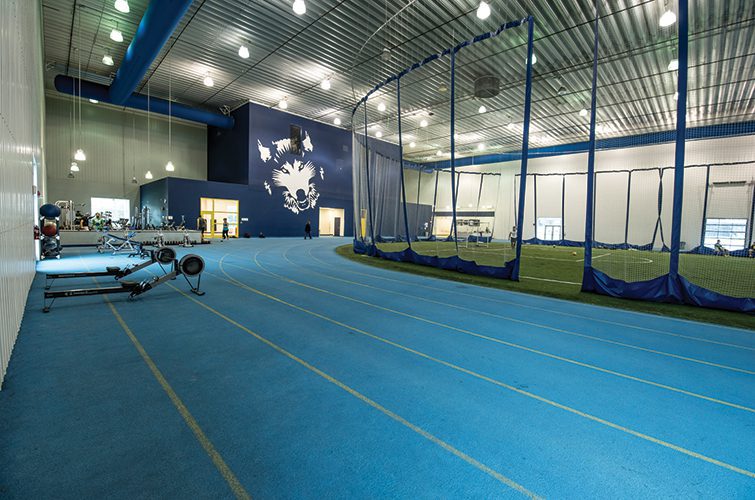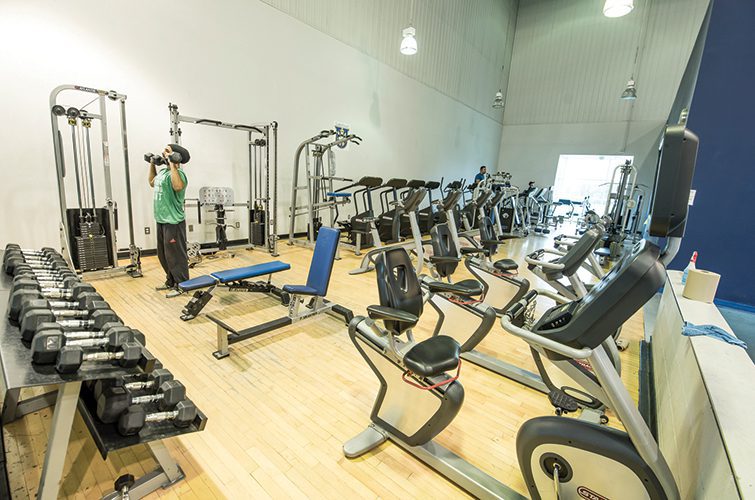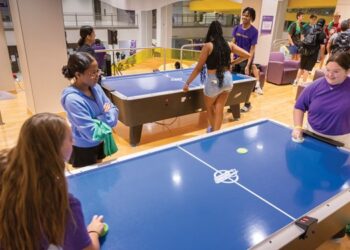Over the last year, the campus recreation industry has reached a consensus that virtual fitness is here to stay. This new era of programming has brought changes to the way schedules are made, classes are taught, the way technology is implemented and the way we connect. Here, three schools share the virtual programs they have implemented and their thoughts on the future of virtual fitness.
Virtual Fitness Programs
Lakehead University
The Healthy at Home series offers two types of virtual fitness classes: live on Zoom with an instructor, and an on-demand library. In the library, new workouts are uploaded based on a set schedule and include demonstrations of each exercise with a recommended way to flow through them all with repetitions and modifications. Live classes are also uploaded to the on-demand library once complete.
“As of right now, we plan on continuing our virtual programs as long as we have the majority of classes online and the demand is there,” said Laura Ferguson, the coordinator of Recreational Programs and Initiatives at Lakehead University.
Utah State University (USU)
USU offers a variety of interactive virtual fitness class options through different platforms, as well as a Fitness at Home program where certified personal trainers have designated at-home workouts to help students stay active.
“These workouts were created with limited space and equipment in mind for students who are remaining at home,” said Daniel Lawrence, the director of Campus Recreation at USU. “Additionally, our virtual fitness program offers an online running club through Strava, online personal training and virtual nutrition coaching.”
Lawrence confirmed USU’s virtual programs currently do not have an end date. They plan to continue providing and expanding virtual programming to better serve students.

University of Kentucky (UK)
Through the Zoom platform, UK is currently offering group fitness classes weekly, such as yoga, kickboxing and HIIT, open to all university staff and students. “In the near future, we will add virtual personal training and small group training to our offerings,” said Casey Gilvin, the fitness director of Campus Recreation and Wellness at UK. “Our virtual fitness program will continue to be offered long after we come through this pandemic as we have identified the virtual platform as an opportunity to target participants who don’t want to come into our facilities.”
Adapting to Change
Initially, the fear of virtual fitness taking away from in-person classes was a large concern. But overall, the industry continues to adapt and finds this new type of programming beneficial in more ways than one.
“The virtual platform allows programs to meet participants where they are,” said Gilvin. “Over time, there may be less of an emphasis on brick and mortar facilities to offer programming, but I do not think virtual fitness will take the place of in-person programming or facilities as there is still a very high percentage of participants who want to come to a facility and workout.”
The recreation team at USU agreed virtual fitness as part of campus recreation allows for the opportunity to reach a larger body of students, especially those online or without easy access to facilities.
“With a majority of students being strapped on time, the easy accessibility of virtual fitness classes offers a layer of convenience for students to fit in activity,” said McKenzie Sorrells, the coordinator of Fitness and Wellness at USU. “Virtual fitness programming can provide a safe and encouraging space for students to engage in new movement, try a new class and meet new individuals in a low-risk environment, leading to more engagement in movement.”

The Future of Virtual Fitness
“Adapt and overcome” or “be adaptable and flexible” — you heard this advice all last year. So if something doesn’t work, Gilvin suggested taking a step back and seeing how it can be changed to become successful. “Fitness is constantly evolving and as practitioners we have to continue to provide dynamic programs and offerings, which means we can’t do the same old thing every year,” he said. “Be open to adapting with what is going on. I think the last year was a great opportunity to step up and deliver programming in ways we never imagined before.”
Overall, the root of offering any programs at all goes back to the health and wellness of your campus community and providing what you can with what you have. “Expanding and growing wellness offerings to match fitness offerings is central to the growth and establishment of holistic programming for campus recreation,” said Lawrence. “Virtual fitness has opened the doors for creative programming and has the possibility to grow into something that better helps support students on campus and state-wide.”











